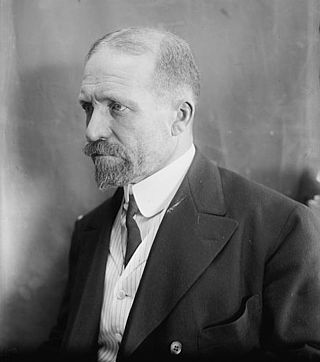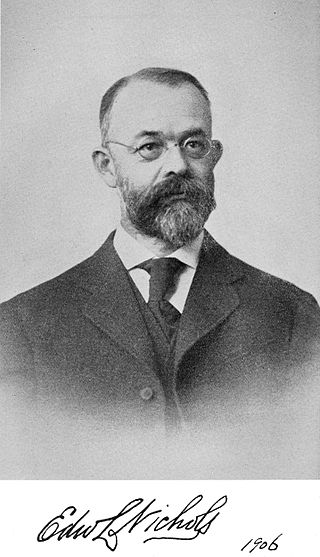Optica, founded as the Optical Society of America, is a professional society of individuals and companies with an interest in optics and photonics. It publishes journals, organizes conferences and exhibitions, and carries out charitable activities.

The history of the telescope can be traced to before the invention of the earliest known telescope, which appeared in 1608 in the Netherlands, when a patent was submitted by Hans Lippershey, an eyeglass maker. Although Lippershey did not receive his patent, news of the invention soon spread across Europe. The design of these early refracting telescopes consisted of a convex objective lens and a concave eyepiece. Galileo improved on this design the following year and applied it to astronomy. In 1611, Johannes Kepler described how a far more useful telescope could be made with a convex objective lens and a convex eyepiece lens. By 1655, astronomers such as Christiaan Huygens were building powerful but unwieldy Keplerian telescopes with compound eyepieces.

The Newtonian telescope, also called the Newtonian reflector or just a Newtonian, is a type of reflecting telescope invented by the English scientist Sir Isaac Newton, using a concave primary mirror and a flat diagonal secondary mirror. Newton's first reflecting telescope was completed in 1668 and is the earliest known functional reflecting telescope. The Newtonian telescope's simple design has made it very popular with amateur telescope makers.

Aden B. Meinel was an American astronomer. He retired in 1993 as a distinguished scientist at the Jet Propulsion Laboratory. He also held the rank of professor emeritus at the University of Arizona College of Optical Sciences. His research interests have included upper atmospheric physics, glass technology, optical design, instrumentation and space systems.

David Peck Todd was an American astronomer. He produced a complete set of photographs of the 1882 transit of Venus.

James Gilbert Baker was an American astronomer and designer of optics systems.
Rudolf Kingslake was an English academic, lens designer, and engineer.

Edward Leamington Nichols was an American scientist. He was a physicist and astronomer, professor of physics at Cornell University.
Xi-Cheng Zhang is a Chinese-born American physicist, currently serving as the Parker Givens Chair of Optics at the University of Rochester, and the director of the Institute of Optics. He is also the Chairman of the Board and President of Zomega Terahertz Corporation.
The John Tyndall Award is given to the "individual who has made pioneering, highly significant, or continuing technical or leadership contributions to fiber optics technology". The award is named after John Tyndall (1820-1893), who demonstrated for the first time internal reflection.

Joseph Henry Eberly is an American physicist. He holds the positions of Andrew Carnegie Professor of Physics and Astronomy, and Professor of Optics at the University of Rochester.
John Adolph Sanderson was president of the Optical Society of America in 1967. He was the former head of the optics division at Naval Research Labs and the Research and Education Officer for the Optical Society of America.
Jean M. Bennett (1930–2008) was the first woman president of The Optical Society in 1986.

Robert Louis Byer is a physicist. He was president of the Optical Society of America in 1994 and of the American Physical Society in 2012.
James Roger Prior Angel is a British-American astrophysicist known for his contributions to astronomy and the design and fabrication of large optics for telescopes, solar power and other applications. He developed the spin casting and stressed lap polishing techniques used at the University of Arizona Richard F. Caris Mirror Lab to produce mirrors for some of the largest optical telescopes in the world. He is a Regents' Professor of Astronomy and Optical Sciences at the University of Arizona.
The Max Born Award is given by Optica for "outstanding contributions to physical optics" and is named after Max Born.
James Clair Wyant was a professor at the College of Optical Sciences at the University of Arizona where he was Director (1999–2005) and Dean (2005–2012). He received a B.S. in physics from Case Western Reserve University and M.S. and Ph.D. in optics from the Institute of Optics at the University of Rochester.

Charles Sheldon Hastings was an American physicist known for his work in optics. His father was Panet Marshall Hastings and his mother was Jane Sheldon Hastings. The father was a physician and anatomy teacher at Hamilton College, where Charles was born. At the age of six the family moved to Hartford, Connecticut, where Charles received his early education. Hastings entered Yale University's Sheffield School of Science in 1867 and received his bachelor's degree in 1870. His early interest in astronomy and telescopes were likely due to Chester Lyman, Chair of Physics and Astronomy at the Sheffield School. He then earned a PhD from Yale in 1873, and immediately was made an instructor in physics. In 1875 he resigned to study in Germany and France until being named an associate at the new Johns Hopkins University in 1876. He became an associate professor of physics at Johns Hopkins University and the first Chair of Professor of Physics of Sheffield Scientific School at Yale University. He collaborated with John A. Brashear on the optical design of large telescopes including the 72-inch (180 cm) reflector at Dominion Astrophysical Observatory and the 30-inch (76 cm) photographic refractor at Allegheny Observatory. His optical designs enabled much progress in astronomy at U.S. observatories. The Hastings Triplet magnifying glass design is based on his optical formulae. In 1916, he was elected an Honorary Member of the Optical Society of America. He was awarded the Elliott Cresson Medal in 1926.
Edward Bausch was an American engineer and business executive, who served as president of Bausch & Lomb Optical Company from 1926 to 1935. In 1933, he was named an Honorary Member of the Optical Society "For his preeminent service in the advancement of optics." He was awarded the twelfth ASME Medal in 1936. He served as chairman of the board until his death.
Irina Borisovna Novikova is a Russian-American physicist specializing in quantum optics. She is a professor of physics at the College of William & Mary.









